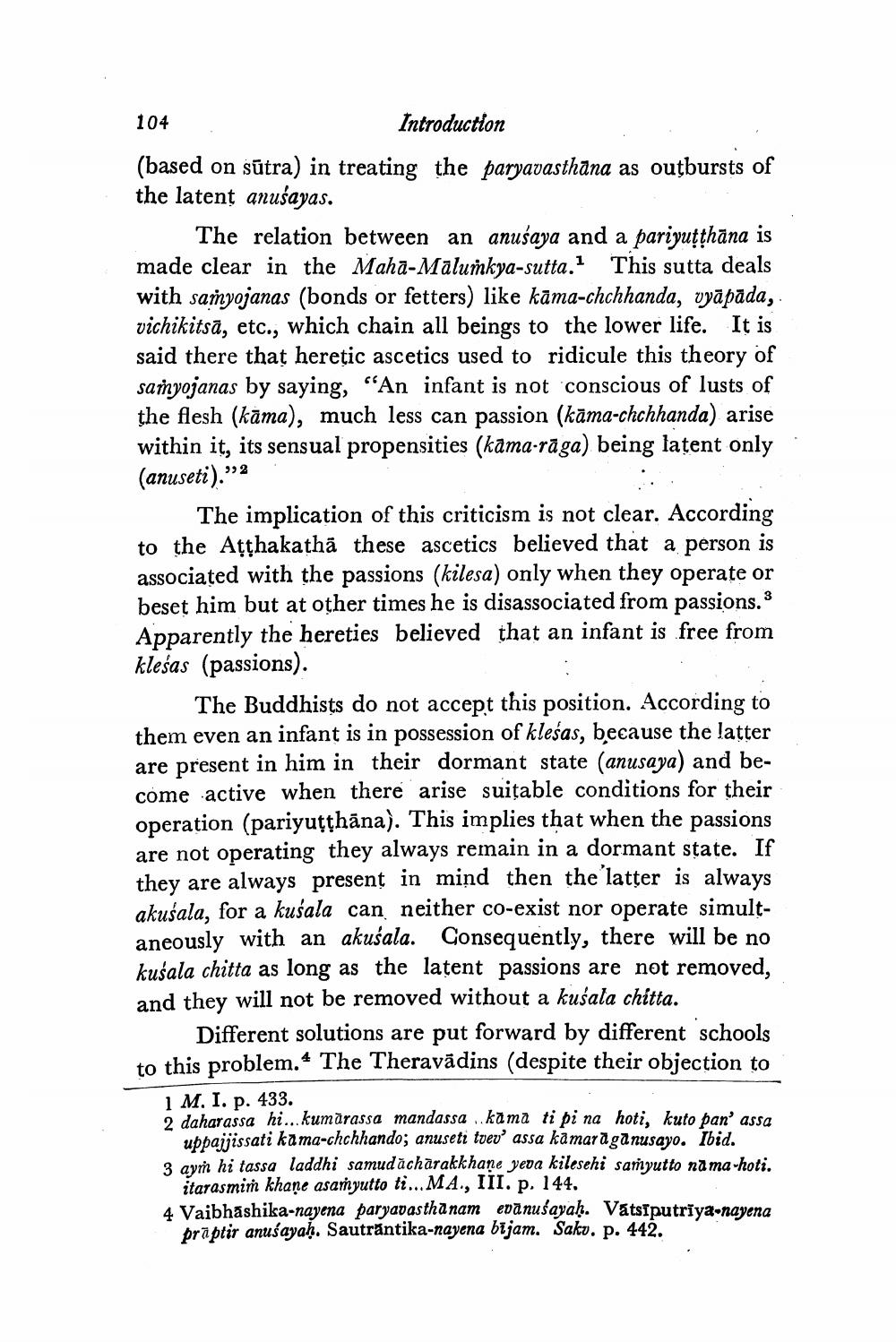________________ 104 Introduction (based on sutra) in treating the paryavasthana as outbursts of the latent anusayas. The relation between an anusaya and a pariyutthana is made clear in the Maha-Malumkya-sutta. This sutta deals with samyojanas (bonds or fetters) like kama-chchhanda, vyapada, vichikitsa, etc., which chain all beings to the lower life. It is said there that heretic ascetics used to ridicule this theory of samyojanas by saying, "An infant is not conscious of lusts of the flesh (kama), much less can passion (kama-chchhanda) arise within it, its sensual propensities (kama-raga) being latent only (anuseti)." The implication of this criticism is not clear. According to the Atthakatha these ascetics believed that a person is associated with the passions (kilesa) only when they operate or beset him but at other times he is disassociated from passions. Apparently the hereties believed that an infant is free from klesas (passions). The Buddhists do not accept this position. According to them even an infant is in possession of klesas, because the latter are present in him in their dormant state (anusaya) and become active when there arise suitable conditions for their operation (pariyutthana). This implies that when the passions are not operating they always remain in a dormant state. If they are always present in mind then the latter is always akusala, for a kucala can neither co-exist nor operate simultaneously with an akusala. Consequently, there will be no kusala chitta as long as the latent passions are not removed, and they will not be removed without a kusala chitta. Different solutions are put forward by different schools to this problem. 4 The Theravadins (despite their objection to 1 M. I. p. 433. daharassa hi... kumarassa mandassa kama ti pi na hoti, kuto pan' assa uppajjissati ka ma-chchhando; anuseti tvevassa ka maraganusayo. Ibid. 3 ay hi tassa laddhi samudacharakkhane yeda kilesehi samyutto na ma-hoti. itarasmir khane asamyutto ti...MA., III. p. 144. 4 Vaibhashika-nayena paryavasthanam edanusayah. Vatsiputriya-nayena pruptir anu ayah. Sautrantika-nayena bijam. Saku. p. 442.




